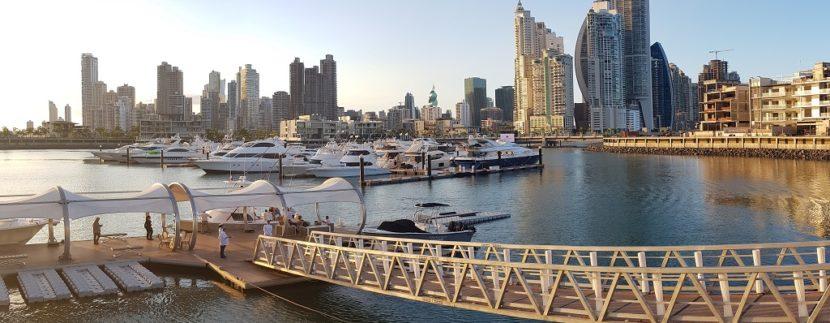Construction Begins: The Story of Ocean Reef, Part III

After years of studies and tests, in 2009 Grupo Los Pueblos was ready to move forward with its ambitious plan to build two islands in Panama Bay. The global economy was in turmoil, but GLP believed the vision of a new waterfront community built around Panama’s largest yacht club was stronger than any market trend.
The first step was to build a model island in Panama Bay. This mini island was built in the future spot of Ocean Reef and it would serve to conduct tests and research on waves, tides, and materials that would inform the construction of the islands. The island also served as a proof of concept, illustrating to prospective clients and investors what was about to happen. To make a point, the developer flew people in a helicopter from Panama City to the islands “somewhere in the ocean” — a trip that took minutes.
The next step was an exhaustive process to prepare the seabed to construct the new islands. The operation started with removing sediment to reach the rock below, which would serve as the foundation for the islands. A barge with a 150-ton on-board crane was brought in to facilitate the process, which removed more than 430,000 cubic meters of sediment.
Finding the appropriate rock was another major challenge. The choice had to meet rigid geological specifications, including the right density and the right porosity. In addition, it couldn’t have any chemical reaction with the saltwater and erode over time or do any harm to the Bay. Ultimately, the rock needed to function as a natural element that would enrich the marine ecosystem.
Basaltic rock fit the requirements and would not create a chemical reaction with the saltwater. This rock’s characteristics ensure there will be no degradation of the material with the passing of time, guaranteeing the longevity and strength of the breakwater. At the same time, its high density and weight, warrants an effective dissipation of energy from waves and tides with minimal, if any rolling effect.
The rock was found in Vacamonte, about 16 nautical miles from the construction sites. Each trip by barge would take four hours each way. In total, more than 663,250 of m3 of basaltic rock would be needed, including rocks from between 1 and 4,000 kg. It was essential to create a stockpile of materials, in order to maintain the construction operation.
The sand for the project was found 65 miles south of Panama. A Trailing Suction Hopper Dredge (TSHD) was employed for sand dredging. This dredge, which can carry the equivalent of 700 dump trucks, suctioned sand from the bottom of the sea for 2 hours and then traveled six hours to the construction site. At the site, the dredge would connect to a 3-kilometer discharge pipe submerged at the bottom of the ocean.
Subsequently, the dredge would make its way back toward the construction site where it attached to a discharge pipe, 3 kilometers in length, that laid submerged at the bottom of the ocean and then started discharging the transported sand.
The first big construction step was the development of the perimeter breakwater, a delicate and precise process. The breakwater would need to be constructed along exact lines to ensure the proper placement of the islands and its position in the bay. The first island breakwater was built with basaltic rock from 1 kg to 60 kg called core. Tug boats and barges used precise GPS equipment to position the rock in precise controlled locations.
As each rock was positioned and the barges made their continual trip, the form of the breakwater started to emerge from the ocean. For the first time, people could see the shape of what was coming — the first manmade residential island development in Latin America.
If you will like more information on the luxury residential options available in Ocean Reef, contact me at
Mobile/WhatsApp +507 66736200 or write to joseart@puntapacificarealty.com



